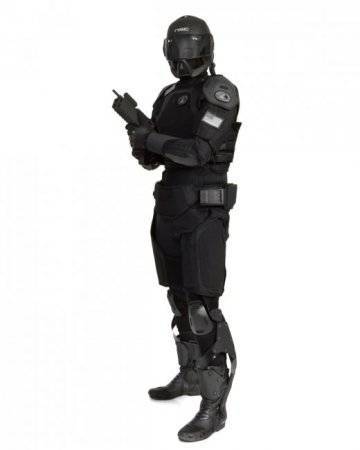Future force warrior
The Pentagon has been thinking about the computerized and technically equipped soldier since the 80s. But the military department was forced to abandon the Land Warrior project, because the corresponding equipment weighed almost 40 kg, and the batteries that powered the soldier were only enough for 4 hours. And so, the Future Force Warrior became the son, above all, nanotechnology. He is armed with a machine gun capable of firing not only ammunition, but also mini-missiles of the 15 mm caliber, equipped with a thermal navigation system, so as not to miss the target. A new model can also produce electrical discharges to immobilize the enemy. The soldier has glasses. For long distance viewing, up to several kilometers, they are used as binoculars. If you have to look at something closely, glasses begin to act like a Mantis system, copied from insects, allowing you to combine visual, infrared and thermal images into one image, which allows you to answer the main question: "What is behind this door?" Naturally, a soldier can lower a mini-monitor, which allows viewing an object from different angles, by eye. And if the Mantis system is not enough to prevent a threat, electronic sensors that signal explosives or human presence, and supermicrophones that can hear the conversation at a distance of 50 m, take effect.
As for the enemy, the equipment installed on the soldier informs about the temperature, heart rate, location of the soldier himself. In addition, there is an armature of nanomaterials, which, like an air cushion on a car, is activated when a blow is struck at a soldier: it becomes tough, like steel, from which bullets bounce off. The same nanomaterials can become nano-scopes, increasing soldier strength by 25-30%.
Ezoskeleton
The Pentagon is thinking about how to protect and at the same time multiply the strength of a soldier. All equipment must be mounted on a kind of frame, and it must control this equipment not electronically, but through sensors connected to its muscles in order to ensure the natural character of the movements. The final result should not be too different from the imperial soldiers from Star Wars. 100 kg weight soldiers must wear as 3 kg. Plus to this - "bionic boots" to move as fast as a bike and jump a few meters. And also climb the walls. In other words, like Spiderman.
Pills
But you can improve and soldier of flesh and blood. With the help of something similar to steroids in athletes. We are talking about pills that help strengthen muscles and increase energy, block fatigue and sleep. If the pills are frightening, then you can think of a helmet with sensors that register fatigue (for example, through the pace of movement of the eyelids) and operating with the help of "magnetic transcranial stimulation", in other words, through magnetic waves that stimulate brain activity. And if the soldier gets hurt? Vaccines come into play that limit or relieve pain after an initial shock. Accelerated recovery technology can also be used: infrared rays for faster recovery of affected tissues (like Dr. McCoy and in Star Trek). If the army is just that, it will have destructive power. But, as Singer notes, there are broader strategic opportunities.
It will be easier to carry out secret or quick operations. And, most importantly, fewer soldiers are required. A smaller number, which means a more compact rear support apparatus. There are two problems - the call to the service of a sufficient number of military personnel and the cost of operations - and they are very acutely perceived in today's America, which has fallen into the trap of the Iraqi adventure. Is this the future of military action? Singer notes the moral and political risks of such a super-technological jump in military capabilities, but also emphasizes that greater complexity entails a greater likelihood of errors. From defoliants in Vietnam to "Gulf Syndrome" - in stories The Pentagon has a lot of failures. This is best known to soldiers who are familiar with the sci-fi version of Murphy’s Law or the rogue’s law, which is based on the statement: if something went wrong, the worst will happen at the most unfavorable moment. Therefore, when the Pentagon experimented with its first eoskeleton, in the time of Vietnam, it turned out that the soldiers were under the greatest pressure to want to get rid of it as soon as possible.
Objective tiger from Creative Technologies Inc. on Vimeo.

Information